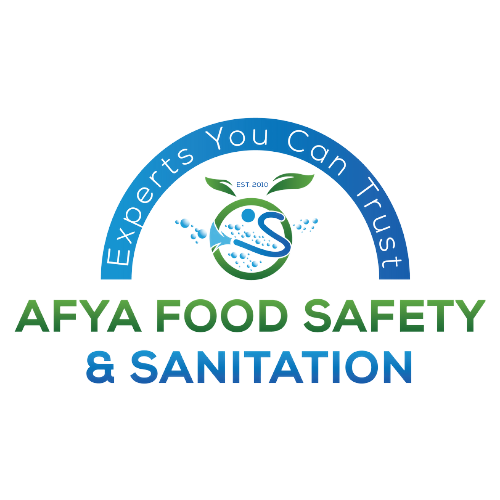
Please Wait For Loading

Please Wait For Loading
Maryland, MD USA
+1 (443) 666-9132
info@afyafoodsafety.com
Opening Hours: 9:00 AM - 5:00 PM
Copyright ©Afya Food Safety all rights reserved.
You can also reach us via Phone: +1 443 666 9132 or via Email:info@afyafoodsafety.com
Sanitation
Sanitation is the creation and maintenance of hygienic and healthful practices designed to prevent contamination. From a food safety standpoint, sanitation involves the removal of pathogenic organisms, prevention of the formation of biofilms and removal of potentially harmful chemicals from food contact surfaces.
Effective Sanitation Process in Food Facilities
Just because a work surface looks clean does not mean that it is sanitary. Sanitation is the treatment of a cleaned surface with a chemical or physical agent to destroy any disease or spoilage causing organisms. The sanitizers used in the food industry are chlorine solutions (bleach), quaternary solutions (quats), and iodine. The core of any sanitation process is knowing how to effectively clean a plant in terms of the product , process and equipment used.
The Basic Steps In Effective Sanitation Process Are;
Developing A Sanitation Program
Sanitation is an important prerequisite program in managing food safety. Implementing a thorough sanitation program starts with a clear understanding of the risk factors and the level of cleanliness that is needed to prevent contamination of food, equipment and wares.
A sanitation program has two main components:
Documenting A Sanitisation Program.
According to Appendix K of the Pasteurized Milk Ordinance (PMO), prior to the implementation of a Food Safety/Hazard Analysis and Critical Control Points plan(HACCP), plants must develop, document, and implement written prerequisite programs.
Documentation of sanitation programs allows a third party to audit the facility and prove that the activities of the facility are in compliance with the regulatory requirements. The three formats used to document sanitation program requirements are:
Sanitation Standard Operating Procedures (SSOPs)
A typical Sanitation Standard Operating Procedure will include a description of the activity to be done; information about the chemical(s) Tobe used ;detailed step-by-step process instructions and equipment to be used. SSOPs are especially important so that new or untrained employees are able to follow instructions on what ,when, and how to do the job.
Sanitation Matrix
A sanitation matrix addresses a facility’s unique needs. The matrix should be completed by relating it to training, verification and the deviation SSOPs.Some of the components of the matrix include the room,area, equipment; The person responsible; chemical used; specific sanitation procedures etc.
Monitoring the Sanitation Program
It is imperative to develop a method to monitor how the Sanitation program is working as well as identifying the corrective measures to be put in place. The procedures of monitoring can include observing sanitation employees during cleaning to make sure that SSOPs are followed correctly.
Sanitation Staff
An effective food safety, quality and Sanitation training program assures a safe product for the end user and ultimately protects your brand . Food production and handling facilities can utilize the expertise of outside contractors such as https://www.afyafoodsafety.com to design training programs and tailored solutions that ensure good quality, a consistent product and a sanitary environment under which foods are produced.
Information on Food Sanitation:
https://www.afyafoodsafety.com/sanitation-services/
https://www.faa.gov.nl.ca/publications/pdf/food_plant_sanitation.pdf
Principles of Food Sanitation Fifth Edition.
Related Posts
Categories
Antibiotic Resistance: A Growing Threat to Food Safety
April 17, 2025Understanding Cross-Contamination: A Major Food Safety Risk
March 31, 2025Calender